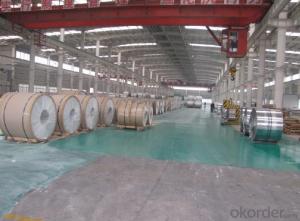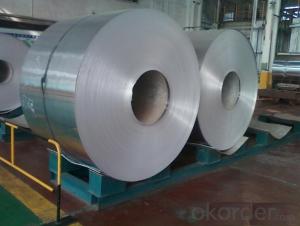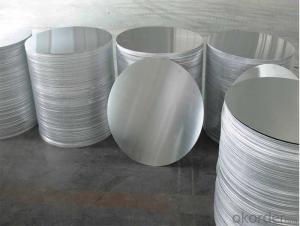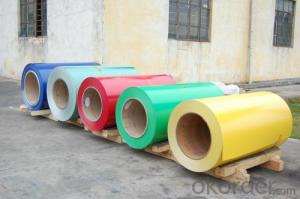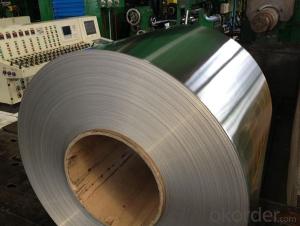Sheets of 3/4 Thick Continuous Casting Aluminium Coil for Building
- Loading Port:
- Shanghai
- Payment Terms:
- TT OR LC
- Min Order Qty:
- 5 m.t.
- Supply Capability:
- 20000 m.t./month
OKorder Service Pledge
OKorder Financial Service
You Might Also Like
Specification
1.Structure of Continuous Casting Aluminium Coil for Building
Continuous Casting Aluminium Coil for Building is one semi-finished aluminium material. This strip can be rolled down to aluminium coil,sheet,circle ect. The alloy AA1050 is widly used in building, industry ect. Its weight is much lower than steel. So many customers choosed aluminium material instead of steel.
2. Main features of Continuous Casting Aluminium Coil for Building
a.Competitive price---We have our own mills and can produce mill finished aluminium coils, so we can control the production cost better.
b.Professional after-sale service---We have more than 15 years exportation experience and you need not worry about the exporation problems.
c.Fast delivery time---We can control the delivery time within 35 days.
3. Image

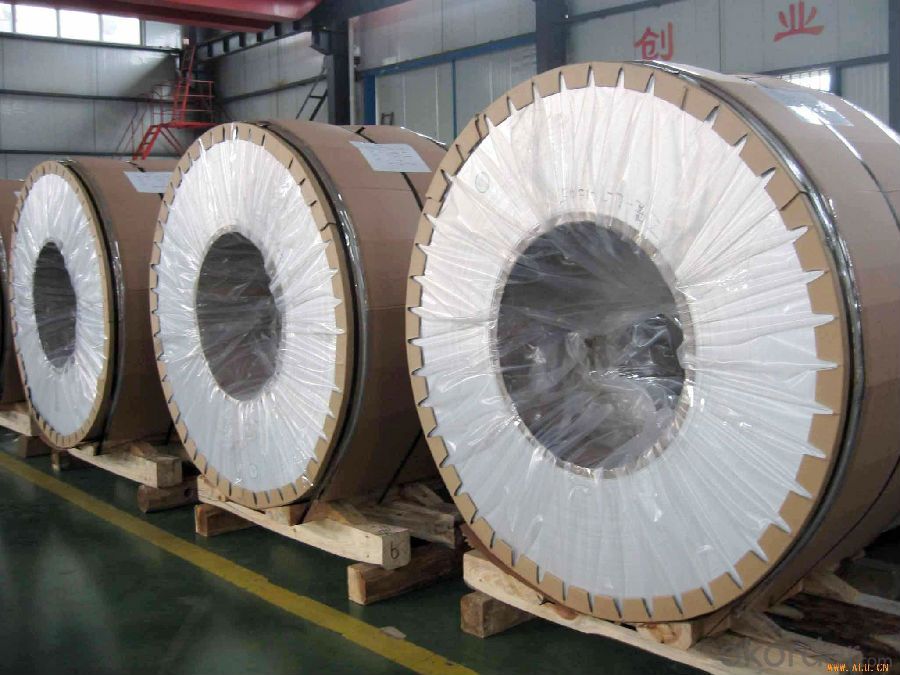
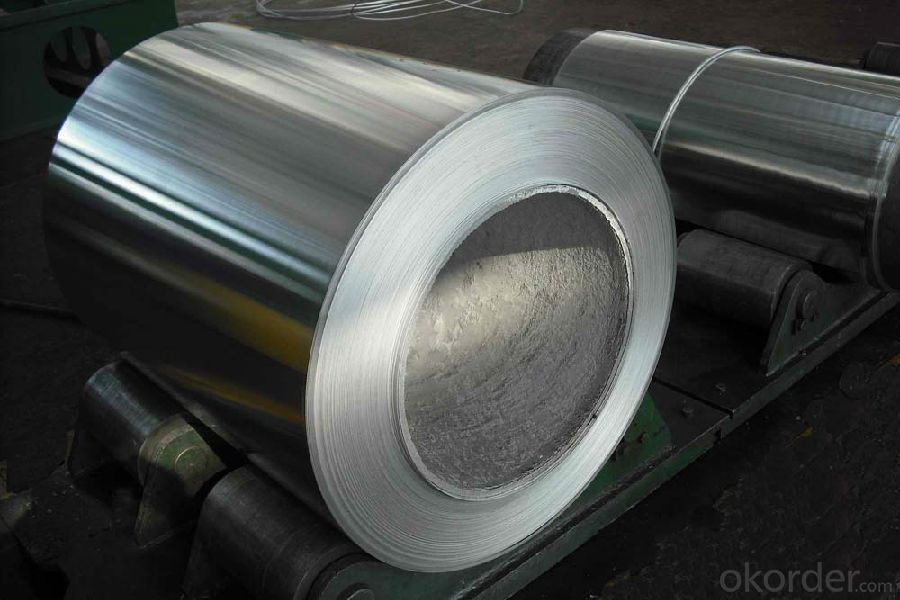
4. Product Specification
| Alloy | Temper | Thickness | Width | Weight |
| AA3003 | H14 | 0.2MM-3MM | 1000MM-1500MM | 2 TONS |
5.FAQ:
What is the quality standard?
---Usually our standard is GB3880-2006
What is the largest width?
---It is 2300mm
What is the MOQ?
---Usually we can accept 80 tons.
- Q: Are the aluminum sheets suitable for manufacturing lighting fixtures?
- Aluminum sheets are a great option when it comes to making lighting fixtures. Aluminum is a material that is both lightweight and flexible, offering numerous advantages for the manufacturing process. One of the main advantages is its exceptional ability to conduct heat, which means it can effectively disperse any heat produced by the lighting components. This is beneficial as it helps to extend the lifespan of the fixtures and maintain their efficiency. Moreover, aluminum is resistant to corrosion, which is particularly important for lighting fixtures as they are often exposed to different environmental conditions. This quality ensures that the fixtures will not deteriorate over time and can withstand outdoor elements. Additionally, aluminum sheets are incredibly malleable, meaning they can be easily shaped and molded into various forms and sizes. This allows manufacturers to create lighting fixtures with customized designs, catering to both functional and aesthetic requirements. Furthermore, aluminum is a sustainable and environmentally friendly material. It is recyclable, which helps to reduce the environmental impact of the manufacturing process. This makes aluminum sheets a popular choice for manufacturers who prioritize sustainability in their operations. In conclusion, the exceptional thermal conductivity, corrosion resistance, versatility, and sustainability of aluminum sheets make them highly suitable for manufacturing lighting fixtures.
- Q: how to connect copper pipe and aluminum sheet?
- welding!
- Q: Can 101 aluminum sheets be powder coated?
- Yes, 101 aluminum sheets can be powder coated.
- Q: Are 101 aluminum sheets suitable for architectural louvers or sunscreens?
- Yes, 101 aluminum sheets are suitable for architectural louvers or sunscreens. They possess excellent strength, durability, and corrosion resistance, making them ideal for outdoor applications. Additionally, their lightweight nature allows for easy installation and maintenance.
- Q: Are 101 aluminum sheets readily available in the market?
- Yes, 101 aluminum sheets are readily available in the market. These sheets are commonly used in various industries and applications due to their excellent corrosion resistance, high strength, and light weight. They can be easily found in metal supply stores, online marketplaces, and specialized aluminum suppliers. Additionally, 101 aluminum sheets are available in different sizes, thicknesses, and finishes, allowing customers to choose the most suitable option for their specific requirements.
- Q: Can aluminum sheets be welded?
- Indeed, welding aluminum is a possibility. Aluminum, being a versatile material, lends itself well to welding through the utilization of different techniques like Tungsten Inert Gas (TIG) welding, Metal Inert Gas (MIG) welding, and Gas Metal Arc Welding (GMAW). However, it is important to note that welding aluminum requires special considerations due to its unique properties in comparison to other metals. Aluminum possesses a low melting point and high thermal conductivity, necessitating a higher heat input and faster welding speed when compared to other metals. Additionally, there is the swift formation of aluminum oxide on the surface, which mandates the removal of this oxide layer prior to welding. To ensure a proper weld quality, specialized welding techniques such as alternating current in TIG welding or the usage of a spool gun in MIG welding are often employed. All in all, with the correct techniques and equipment, aluminum sheets can indeed be welded successfully, making it a favored choice in industries including automotive, aerospace, and construction.
- Q: I am looking at buying a used 1983-84 Eldorado but have read some things about the reliability of the aluminum engine. Any thoughts? Thanks.
- aluminum engines are used to save weight and help increase horsepower, I don't think that making an engine from aluminum is a bad thing, the biggest problem is making sure you NEVER EVER OVERHEAT IT. They use steel sleeves in the piston bores and other critical high stress areas, but the biggest problem is once overheated its done, vaporized aluminum is actually very explosive too, Any Eldorado's still around from 84 now, I think has a good engine in it. another potential problem is spark plug removal and installation, using an anti seize is recommended. If you do find an Eldorado's now, someone may have installed a iron block in it anyway, because one thing aluminum motors are known for, is being very expensive.
- Q: What are the different types of aluminum sheets available?
- There are several different types of aluminum sheets available, each with their own unique properties and uses. Some of the most common types include: 1. Pure Aluminum Sheets: These sheets are made from 100% aluminum and are known for their excellent corrosion resistance and high thermal conductivity. They are often used in applications where lightweight and durability are important, such as in the aerospace industry. 2. Aluminum Alloy Sheets: These sheets are made by combining aluminum with other elements, such as magnesium, copper, or zinc, to enhance specific properties. For example, aluminum-magnesium alloy sheets (5000 series) are known for their excellent strength and resistance to corrosion, making them suitable for marine applications. 3. Painted Aluminum Sheets: These sheets have a layer of paint or coating applied to their surface, providing them with additional protection against corrosion and enhancing their aesthetic appeal. They are commonly used in architectural projects and signage. 4. Perforated Aluminum Sheets: These sheets have small holes or perforations evenly spaced across their surface. They are often used in applications where airflow or visibility is required, such as in HVAC systems, decorative panels, or speaker grilles. 5. Embossed Aluminum Sheets: These sheets have a raised pattern or design on their surface, achieved through a process of embossing. This not only adds visual interest but also increases the strength of the sheet, making it suitable for applications such as flooring, vehicle panels, or decorative purposes. 6. Anodized Aluminum Sheets: This type of aluminum sheet undergoes an electrolytic process called anodizing, which forms a protective layer on its surface. Anodized sheets are highly resistant to corrosion and wear, making them ideal for outdoor applications, such as building facades, window frames, or automotive trim. It is important to consider the specific requirements of your project before selecting the type of aluminum sheet. Factors such as strength, corrosion resistance, appearance, and cost should be taken into account to ensure the right sheet is chosen for the job.
- Q: This question asks about the typical duration an aluminum roof sheet can last before it needs to be replaced or repaired.
- <p>The lifespan of aluminum sheets for roofing can vary depending on the quality of the material, installation, and environmental factors. On average, a well-maintained aluminum roof can last between 20 to 50 years. High-quality aluminum roofing materials, when properly installed, can even exceed this range, offering a lifespan of up to 70 years. However, it's important to note that regular inspections and maintenance are crucial to extend the life of any roofing material, including aluminum.</p>
- Q: What rules or guidelines exist for using recycled aluminum sheets in construction projects?
- <p>Yes, there are regulations and guidelines regarding the use of recycled aluminum sheets in construction. These often include standards for material quality, safety, and environmental impact. The American Society for Testing and Materials (ASTM) and the Aluminum Association provide specifications for recycled aluminum alloys used in construction. Compliance with building codes and local regulations is essential. Additionally, recycled aluminum must meet performance and safety standards equivalent to those of new materials. It's crucial to check with local building authorities and consult the latest industry standards to ensure compliance when using recycled aluminum in construction.</p>
Send your message to us
Sheets of 3/4 Thick Continuous Casting Aluminium Coil for Building
- Loading Port:
- Shanghai
- Payment Terms:
- TT OR LC
- Min Order Qty:
- 5 m.t.
- Supply Capability:
- 20000 m.t./month
OKorder Service Pledge
OKorder Financial Service
Similar products
Hot products
Hot Searches
Related keywords
